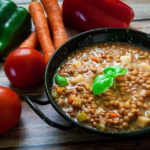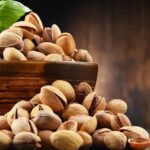The Roman poet Juvenal said that Poppea, Nero’s wife, traveled with a legion of donkeys to wash herself with their milk. It is also said that, in ancient Egypt, Cleopatra bathed in milk of the same origin to keep her skin soft and smooth, and that Elizabeth of Bavaria (better known as Empress Sissi) used it in her beauty rituals.
Nowadays, another equine milk, mare’s milk, has picked up the baton of prestige and is gaining popularity in Europe for its supposed therapeutic benefits. Is it justified? What does science say about its properties?
Very popular in Asia
This food is an old acquaintance in some Asian countries, such as Mongolia, Russia, China, Kazakhstan or Uzbekistan. Historically, it has been used to treat diseases, improve the immune system and provide vitality.
Apart from these medicinal uses, mare’s milk has also often served as a substitute for breast milk, given the similarities in its composition. And because it has a low allergic response in children with cow’s milk protein allergy, it is potentially useful as an alternative to formula milk.
Today, its consumption is spreading in our environment, especially in the form of powdered milk (freeze-dried), as a food supplement or even as an ingredient in cosmetics for those who rely on its benefits for the skin. As a drink, mare’s milk is sweet and light, although it is not commonly found in liquid form.
Differences with other milks
A quick internet search will turn up a long list of websites touting the “therapeutic properties” of mare’s milk. They highlight its content in fatty acids, minerals, vitamins and essential amino acids. But this is not exactly what the science says.
To begin with, it is important to keep in mind that all types of milk, including cow’s milk, contain fat (and fatty acids), lactose, proteins, essential amino acids, vitamins and minerals to a greater or lesser extent, in addition to many other compounds.
Amino acids are structural units of proteins (like links in a chain) and can be classified as non-essential and essential, depending on whether or not the body can produce them. Therefore, foods rich in essential amino acids are essential for the proper functioning of the metabolism. And although it is true that mare’s milk proteins contain them, they are also found in any other type of milk.
On the other hand, fatty acids are a type of molecule that make up the majority of lipids (or fats) that we consume through foods such as dairy products, meat or oil. Mare’s milk (like human milk) is characterized by a low fat content: between 0.3 and 2 %. Cow’s and sheep’s milk, for example, contain 3 to 5 % and 5 to 9 %, respectively.
In addition, the fat in this milk has a very different composition from that of other animals. Being monogastric (non-ruminant), the horse’s digestive system absorbs and accumulates in the milk a greater amount of omega-3 (mainly linolenic acid) and omega-6 (mainly linoleic acid) fatty acids.
Essential for the proper functioning of the body, these fatty acids are necessarily obtained through the diet, which speaks in favor of mare’s milk.
On the other hand, it should also be noted that it has a low content both in total fat and in other omega-3 fatty acids of great interest, such as EPA and DHA. This limits its attractiveness as a source of beneficial fatty acids.
In terms of vitamins and minerals, mare’s milk has a generally low content, with the exception of vitamin C and iron.
Health properties under study
According to European legislation, the approval of the European Food Safety Authority (EFSA) is required to declare a health property in a food. This only occurs when there is sufficient scientific evidence to support it.
At present, there is no health property approved for mare’s milk, so common claims such as “improves the immune system” or “increases vitality” are neither verified nor justified from a scientific point of view.
Of course, this does not mean that it does not have virtues, but to date there is insufficient evidence. And although recent studies have shown a potential benefit against type 2 diabetes, cancer or skin conditions, these studies are still preliminary and very scarce.
As for therapeutic claims, European legislation does not authorize claims that a food prevents, treats or cures a disease, so claims in this sense are not justified either.
In short, although mare’s milk has a low content of fat, protein, minerals and vitamins compared to most of the milks we consume -including cow’s milk-, it contains elements of great interest for human nutrition, such as omega-3 and omega-6 fatty acids. There is still a long way to go in research to demonstrate its promising healthful qualities.













